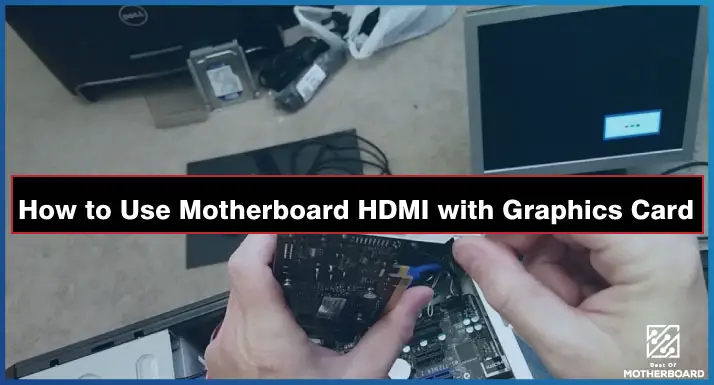Generally, the number of SATA ports you need will be determined by the number of storage devices you plan to connect to your computer. Each drive works with a single SATA port. For a basic computer build, two SATA ports are more than enough. However, if you want to add more storage devices, then, more SATA ports will be required.
A typical motherboard has about four to six SATA ports. This usually depends on the size and chipset of the motherboard. The kind of computer build you want to have will come into play. So, what you require your computer for will determine the number of SATA ports you need. SATA ports have been largely known for connecting storage devices. These devices could range from hard disks to optical drives and then, SSDs.
If it is your first time building a computer, then, knowing how many SATA ports you need is important. We will be showing you how you can figure that out. We will be doing this by considering the functions you want to have on your computer. We will also be showing you how you can add more SATA ports.
Let’s start by considering SATA ports on a motherboard
In connecting hard drives to a computer, an interface will be required. SATA is that interface that helps you connect drives to your motherboard. The SATA ports have seen innovation down the years. The current version of the SATA is the SATA 3.0.
Each version of the SATA has a better performance level than the predecessor. The current version comes with a better speed level than the previous sets. Your motherboard spec sheet should give you insight into the version of the SATA ports you have. It will also show you the number of SATA ports you have available.
How many SATA ports do you need?
As we have highlighted earlier, the number of SATA ports you need depends on several factors. One of the most important factors will be the reason for your build. Regular use of your computer might not need so many SATA ports as professional use.
So, let’s consider different uses of computers and how they will inform the number of SATA ports to use.
1. For Regular Use
We can work with a regular assumption that the regular use of a computer will be surfing the internet and word processing tasks. Other basic tasks can also fit in here. Regular use of the computer will require one port for the hard drive. Another port will also be needed for the optical drive.
Two SATA ports will therefore be sufficient for regular home or office use. This should not be an issue as most motherboards come with at least four SATA ports. So, there should not be issues with the regular use of your computer.
Related: How To Check Power Supply Wattage Without Opening
2. For Intermediate Use
Intermediate use will encompass the basic tasks that we have highlighted. It will also take it a tad higher by including photo and video editing. For this kind of usage, you will require more storage capacity. Faster speeds will also be needed for ease in the primary boot drive.
In such scenarios, two hard drives will be needed to store media. You may also need a SATA SSD drive. A CD drive for recording your media will also come in handy. Using an SSD as the primary drive is highly recommended for intermediate use. It will give better performance than a normal hard drive.
You don’t necessarily need a large SSD. The SSD could serve the function of running the operating system or top projects you might be working on. Large files can be stored on the two archival hard drives.
For intermediate use, especially if you work with many editing software, four SATA ports are the minimum. This will help cater to the current need. It will also allow room for future expansion. This is a level higher than the regular use.
3. For Professional Use
Sometimes, you might want to leverage your SATA ports for more than two drives. This can come in handy to improve the storage capacity of your computer. It could also help to create a personal media server. This kind of usage falls under the category of professional use.
Professional use of your computer could require multiple drive bays. This means that you might need some drives as backups just in case some of the drives fail. You will therefore need a motherboard that has as many SATA ports as you can get. For this kind of use, six or eight SATA ports should work out just fine.
How to increase the number of SATA ports you have
Somewhere down the line, you might need more drives for your computer. You may most likely have exhausted the SATA ports that you have. Well, there is a way out. You can either work with a storage controller or a SATA expansion card.
The SATA expansion card is usually connected to the PCIe express slot. The size and price of the expansion card depend on many factors. These factors include:
- The number of SATA ports they come with.
- The version of the SATA ports.
- If the ports are RAID or non-RAID.
A SATA expansion card with SATA 3 ports and a RAID utility will be expensive and large. Whereas an expansion card with a SATA 1 port and no RAID utility will be fairly inexpensive and smaller. The expansion card is typically installed into the PCIe slots. This is because these slots are faster than the SATA ports. You rarely have performance downtime with the PCIe slots.
Related: How Much Should I Spend on a Motherboard
Conclusion
Determining the number of SATA ports you need is not a one-fit-size-all pattern. You will have to figure out what exactly you need your computer build for. This will help provide clarity into the number of SATA ports you need.
You have to ensure that you don’t have a motherboard that has insufficient SATA ports. It can be quite costly. So, the best bet will be to consider your needs. We have carefully highlighted the number of SATA ports you might need for different categories of use. You should not have issues once you follow through with our guidelines.
So, go and make the best decision with your SATA ports.

![How Many Sata Ports do You Need? [Detailed-Guide] 2 How Many Sata Ports do You Need](https://bestofmotherboard.com/wp-content/uploads/2022/02/How-Many-Sata-Ports-do-You-Need.jpg)


![How to Add More SATA Ports to Motherboard? [Guide] 5 How to Add More SATA Ports to Motherboard](https://bestofmotherboard.com/wp-content/uploads/2022/02/How-to-Add-More-SATA-Ports-to-Motherboard.jpg)
![How To Install Motherboard Drivers With USB? [Guide] 6 How To Install Motherboard Drivers With USB](https://bestofmotherboard.com/wp-content/uploads/2022/02/How-To-Install-Motherboard-Drivers-With-USB.jpg)